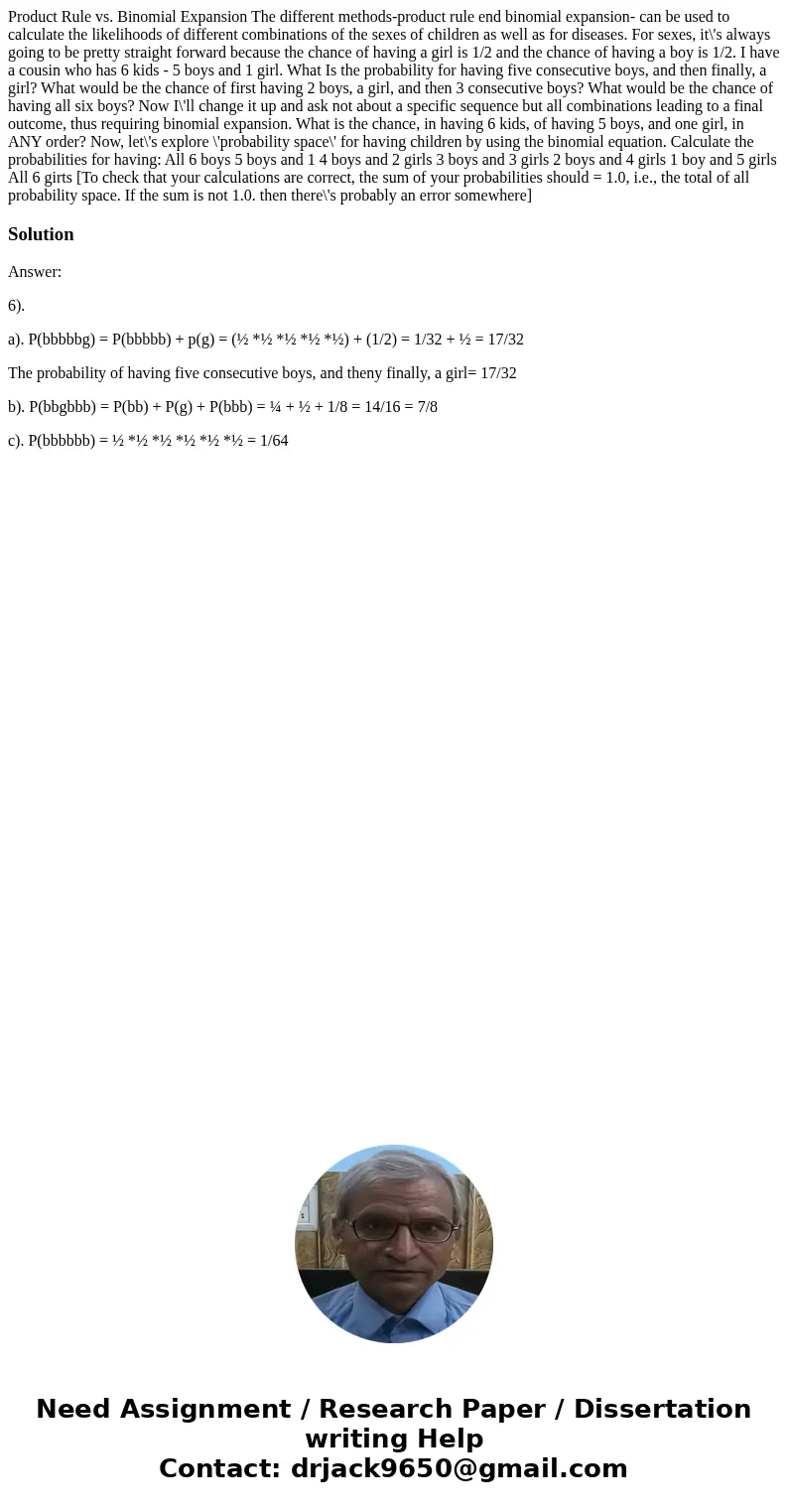Product Rule vs Binomial Expansion The different methodsprod
Product Rule vs. Binomial Expansion The different methods-product rule end binomial expansion- can be used to calculate the likelihoods of different combinations of the sexes of children as well as for diseases. For sexes, it\'s always going to be pretty straight forward because the chance of having a girl is 1/2 and the chance of having a boy is 1/2. I have a cousin who has 6 kids - 5 boys and 1 girl. What Is the probability for having five consecutive boys, and then finally, a girl? What would be the chance of first having 2 boys, a girl, and then 3 consecutive boys? What would be the chance of having all six boys? Now I\'ll change it up and ask not about a specific sequence but all combinations leading to a final outcome, thus requiring binomial expansion. What is the chance, in having 6 kids, of having 5 boys, and one girl, in ANY order? Now, let\'s explore \'probability space\' for having children by using the binomial equation. Calculate the probabilities for having: All 6 boys 5 boys and 1 4 boys and 2 girls 3 boys and 3 girls 2 boys and 4 girls 1 boy and 5 girls All 6 girts [To check that your calculations are correct, the sum of your probabilities should = 1.0, i.e., the total of all probability space. If the sum is not 1.0. then there\'s probably an error somewhere]
Solution
Answer:
6).
a). P(bbbbbg) = P(bbbbb) + p(g) = (½ *½ *½ *½ *½) + (1/2) = 1/32 + ½ = 17/32
The probability of having five consecutive boys, and theny finally, a girl= 17/32
b). P(bbgbbb) = P(bb) + P(g) + P(bbb) = ¼ + ½ + 1/8 = 14/16 = 7/8
c). P(bbbbbb) = ½ *½ *½ *½ *½ *½ = 1/64

 Homework Sourse
Homework Sourse